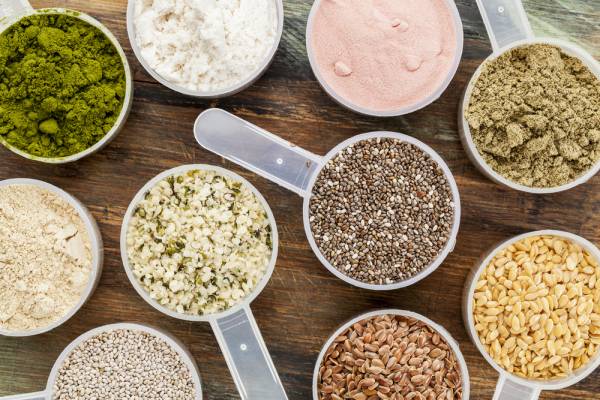Anyone who has pushed themselves through tough training sessions has undoubtedly experienced nausea at some point or another. It’s to be expected with intense workouts, especially when you have a high work-to-rest ratio (i.e. short rest intervals) that don’t allow for full recovery in between sets, such as with interval training, circuit training, and high-volume bodybuilding-style workouts.
That being said, no one enjoys nausea or vomiting, especially if it interrupts the flow of a training session. Luckily, there are a few strategies you can employ if this is a persistent problem for you.
What Triggers Nausea in Your Workouts?
There are multiple potential causes of nausea during training, but we will first discuss the primary cause, which is the rise in acidity that occurs when you stress your anaerobic energy systems and work above your lactate threshold.
In simplified terms, the lactate threshold is the point during intense exercise at which lactate is produced faster than it can be metabolized and begins to accumulate in the blood. Because of the high demand for ATP during this type of intense anaerobic exercise, hydrogen ions also begin to accumulate in the blood, as they are released during the hydrolysis of ATP.
“Each strategy is beneficial on its own, and when combined, these strategies can work synergistically to be even more effective.”
It is this rapid breakdown of ATP and accumulation of hydrogen ions that decreases your blood pH (and thus increases acidity) and tends to promote nausea. The good news is your body will adapt to this type of training. The body is able to raise its lactate threshold and become better at buffering the acidity.
That being said, there are also a few tricks you can put to use immediately to help combat the buildup of acidity – and hopefully keep you from decorating the gym floor with the contents of your stomach.
Buffering Acidity Through Nutrition
One of the most effective ways to keep your stomach settled is to sip on an alkalizing drink to counteract the rising acidity levels. Not only will you feel better, but you will also increase your work capacity by extending your time to muscular exhaustion.
As a bonus, maintaining good pH balance has tremendous benefits beyond simply being able to train harder, such as improved energy levels and a stronger immune system.
The following is the recipe I use to make my workout drink:
- 32oz of water
- Juice from one whole lime or lemon
- ¼ tsp of Celtic or Himalayan salt
- 1 scoop of concentrated greens powder

The ingredients in this drink provide a range of benefits to improve workout performance and prevent nausea:
- The lemon or lime juice, although acidic when outside of the body, actually has an alkalizing effect when ingested, and is very effective at settling the stomach.
- The salt, besides supplying sodium, also provides a range of other trace minerals to help maintain electrolyte balance and prevent muscle cramping. Surprisingly, it also makes the water much more palatable and refreshing during a sweat-drenched workout. Don’t worry, it won’t taste like you’re drinking seawater!
- Adding a scoop of concentrated greens powder will further contribute to the alkalizing effect of the water in addition to adding a range of antioxidants and other nutrients. If you are not a fan of the greens flavor, try chugging the greens separately before training to still get the benefits.
To further boost your acid buffering capability, I recommend you also supplement with beta-alanine, which is an amino acid precursor to carnosine. Carnosine is a compound found in muscle tissue that buffers the acidity formed during the breakdown of ATP. Beta-alanine should be taken before you train, but the timing is not that important, because the carnosine formed is able to be stored in muscle tissue until it needs to be used.
Special Considerations Concerning pH and Training
Although maintaining a more alkaline pH will help prevent nausea and delay muscle fatigue, there is evidence the acidic environment produced during training is actually necessary to initiate the hormonal response required for hypertrophy.
“Be aware that trying to stay as alkaline as possible may not be the best strategy when hypertrophy is the primary goal.”
So does that mean having an alkaline drink during training will cancel out all of your potential muscle gains? I wouldn’t go as far as to say you can’t build muscle while drinking alkalizing water, but with that in mind, it may be best to use an alkaline drink primarily when you are concerned with maximizing performance, as opposed to when you want to emphasize muscle growth.
For those concerned with achieving the greatest muscle-building effect, have the drink an hour after you finish training to take advantage of the health and recovery benefits without interfering with stimulating hypertrophy.
Other Potential Nausea Triggers
Sometimes nausea is a result of simply making poor pre-workout meal choices. Here are some ideas for you to test out:
- Give yourself at least an hour between the time you finish eating and the time you start your workout.
- Choose proteins that are quick to digest like fish, eggs, and ground meats.
- Don’t consume too much saturated fat.
- Keep pre-workout meal portions moderate if getting nauseous has been an issue for you.
Pre-workout supplements containing a lot of stimulants also tend to make some individuals nauseous, especially if the supplements include high doses of yohimbe or caffeine. Laying off any pre-workout stimulants or coffee for a while is a good strategy if you tend to get nauseous regardless of the intensity of the workout and you haven’t been able to manage the problem otherwise.

Keep Your Nutrition in Check
To sum it all up, managing your pH levels through nutrition, supporting your acid-buffering capabilities in the muscles with beta-alanine, and making smart pre-workout supplement and meal choices will all help to keep nausea at bay and improve your workout performance.
Each strategy is beneficial on its own, and when combined, these strategies can work synergistically to be even more effective. Just be aware that trying to stay as alkaline as possible may not be the best strategy when hypertrophy is the primary goal, as it may blunt the hormonal response to training.
Try these tactics during your next workout and remember you don’t have to feel sick to have a good workout!
Check out these related articles:
- How to Reach Freak Level Fitness
- Eating to Recover – How and What to Eat Post-Workout
- Folic Acid Protects Athletes Against High-Intensity Exercise
- What’s New On Breaking Muscle Today
Photos courtesy of Shutterstock.






